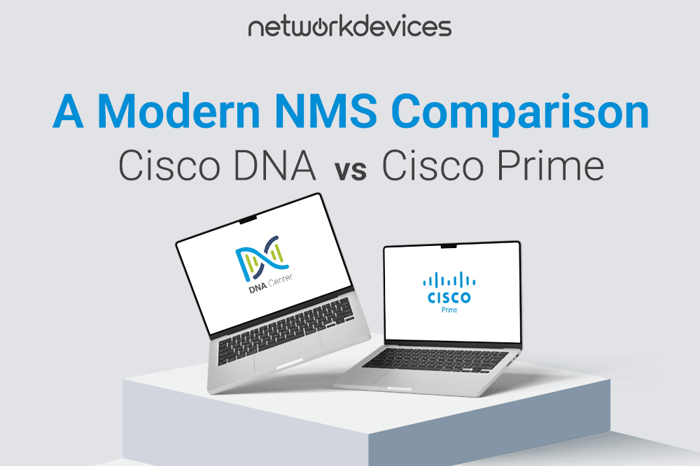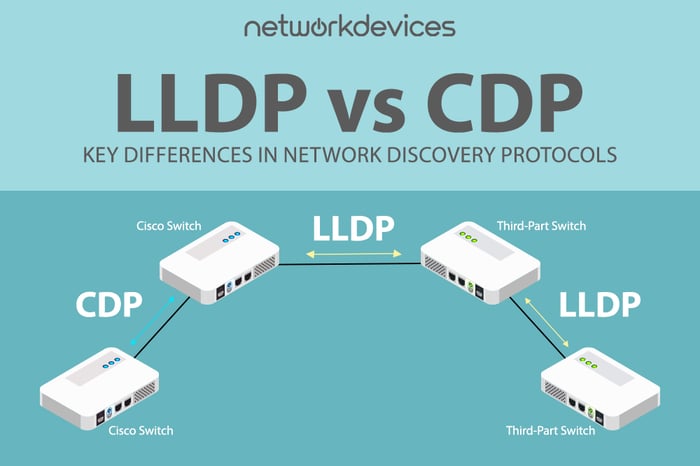You have no items in your shopping cart.
![]()
Cisco Silicon One vs. Broadcom: Chipset Battle Royale
In the highly competitive industry of ASIC chipsets, two giants, Cisco and Broadcom, stand out. This article delves into the key features, performance, and use cases of Cisco Silicon One and Broadcom chipsets, providing insights to help you make an informed decision. In a nutshell:
- Cisco Silicon One: Recommendable for organizations requiring multiple, energy-effective, high-performing network solutions with consolidated design.
- Broadcom is perfect for building dependable and highly effective networking hardware, which is best for complex operations such as AI/ML and HPC.
Comparison Table
When comparing Cisco Silicon One and Broadcom, it's crucial to consider specific attributes such as speed, power usage, adaptability, and price. These attributes play a significant role in the performance and cost-effectiveness of the networking hardware. Understanding the unique strengths of each chip type in these areas will guide you in making the right decision that aligns with your organization's needs.
Cisco Silicon One
Cisco Silicon One is an innovative family of networking silicon for building next-generation high-performance networks. It represents Cisco's commitment to innovation and leadership in the networking industry. Here's a detailed look at Cisco Silicon One and its significance:
Key Features of Cisco Silicon One
- Throughput: Cisco Silicon One chips offer high bandwidth capability, with a maximum transmission rate of 25.6 Tbps in a single chip over the specified distance. This makes it possible, for instance, to process vast volumes of data.
- Low Latency: Cisco Silicon One chips are designed for low latency and built for speed. This is crucial in applications requiring high-speed data processing and transmission. The emphasis on speed underscores the power of these chips in such high-performance applications.
- Unified Architecture: Cisco Silicon One's unified architecture is a cost-effective solution for various networking equipment, including routers, switches, and data center equipment. It helps minimize total costs, giving decision-makers confidence in their investment and achieving more excellent operational performance.
- Programmability: Cisco Silicon One's programmability feature is a game-changer, empowering network operators to adapt their networks to changing needs and emerging trends over time.
- Power Optimization: Another feature of Cisco Silicon One is low power consumption without compromising performance, which is excellent from the perspective of cost savings and environmental concerns.
- Modular Design: The modular design of Cisco Silicon One allows for scalable solutions, making it easier for networks to grow and adapt to increasing demands without requiring significant overhauls.
- Built-in Security Features: The silicon contains enhanced security measures that protect it against many threats for secure data transfer.
- High-Capacity Routers: High-capacity routers utilize this technology to ensure dependable data routing within networks, such as service provider backbones and enterprise networks.
- Data Center Switches: Empowering data center switches with high-speed performance and minimal delays to cater to cloud computing, storage, and virtualization requirements.
- Carrier-Grade Solutions: Helps service providers deliver internet and networking services to their customers, meeting the increasing bandwidth and connectivity needs.
- Enterprise Networks: Campus and Branch Solutions: Facilitates robust networking solutions for enterprise campuses and branch offices, ensuring seamless connectivity and efficient data management.
Benefits of Cisco Silicon One
1. It is streamlining operations.
Simplifying silicon maintenance across various devices reduces the complexity of managing multiple types.
2. Cost Savings:
The energy-efficient design and high-performance lead to lower operational costs, making it a cost-effective solution for large-scale network deployments.
3. Future-Proofing:
The programmability and scalability of Cisco Silicon One ensure that networks can evolve and adapt to future technological advancements and increasing data demands.
Cisco Silicon One product family
In December 2019, Cisco made a bold announcement about how they’d forever change the economics of the internet and drive innovation at speeds like no one had ever seen before.
You can check the source from here.
![]()
Now you can have multiple devices under one architecture, all with the industry's best programmability, performance, buffering, scale, and power efficiency.
The Cisco Silicon One G200 processor is a 51.2-Tbps, full-duplex, standalone switching processor that can be used to build fixed form factor switches ideally targeted for web-scale data center spine and leaf applications and AI/ML applications.
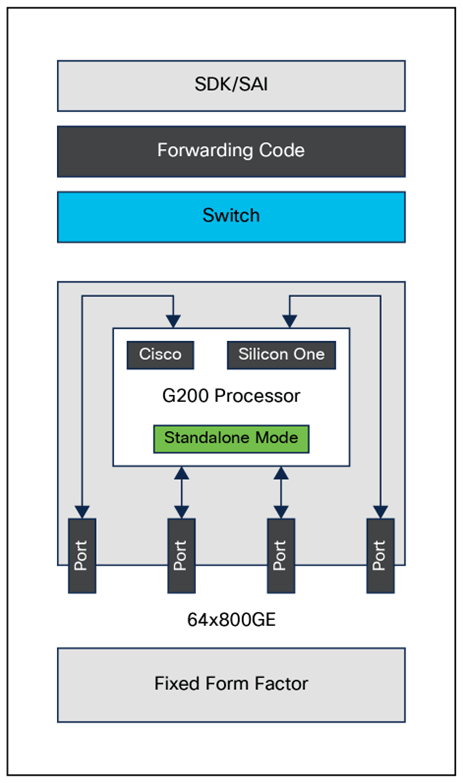
You can visit to Cisco website to know about datasheet.
Broadcom
Broadcom has made investments in decreasing latency well. Their recent chips are designed for low latency performance, specifically targeting demanding tasks in data centers and high-performance computing settings. The company accomplishes this by employing manufacturing methods and innovative design approaches.
Broadcom offers many products, including top-notch semiconductor and infrastructure software solutions. Its semiconductor lineup consists of data center switches and routers, set-top/CMTS, cable modems, PON/DSL, Ethernet NICs, filters and amplifiers, ASIC, wireless connectivity solutions embedded processors, HDD/SSD controllers, enterprise SAS/SATA/Fibre Channel connectivity optical isolation/motion encoders/LEDs, and fiber optic solutions.
The company's infrastructure software offerings cover enterprise solutions to build, connect, manage, and protect complex digital environments.
Broadcom's Tomahawk and Trident series chips are also considered high-performance ones. For instance, the Tomahawk 4 supports 25. 6 Tbps bandwidth, comparable to the Cisco Silicon One. Broadcom's chips focus on fast data transfer and minimal delays, making them suitable for various networking environments.
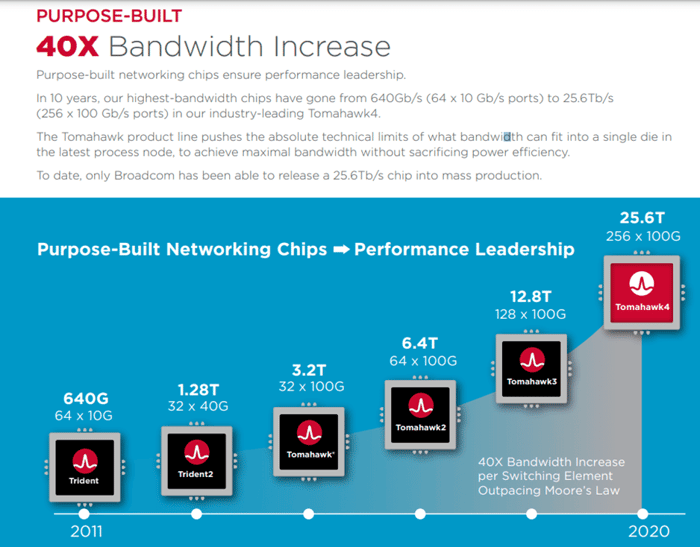
Key Features of Broadcom:
- Custom Silicon Solutions: Tailored silicon solutions for applications such as networking, data centers, broadband, and wireless communication.
- Optical and Wireless Components: Advanced components for optical communication and wireless networks, ensuring high-speed data transmission and connectivity.
- ASICs (Application-Specific Integrated Circuits): Custom-designed ASICs optimized for specific applications.
- Mainframe and Enterprise Software: Comprehensive solutions for mainframe environments, including security, storage management, and workload automation.
- Cybersecurity Solutions: Advanced security products to protect against cyber threats, ensuring data integrity and compliance.
- DevOps and Automation Tools: Tools to enhance productivity through automation and streamline DevOps processes.
- Ethernet Switching and Routing: High-speed Ethernet switches and routers for data centers and enterprise networks, ensuring efficient data flow and connectivity.
- Wi-Fi Solutions: Robust Wi-Fi solutions for enterprises and service providers, offering high-speed wireless connectivity.
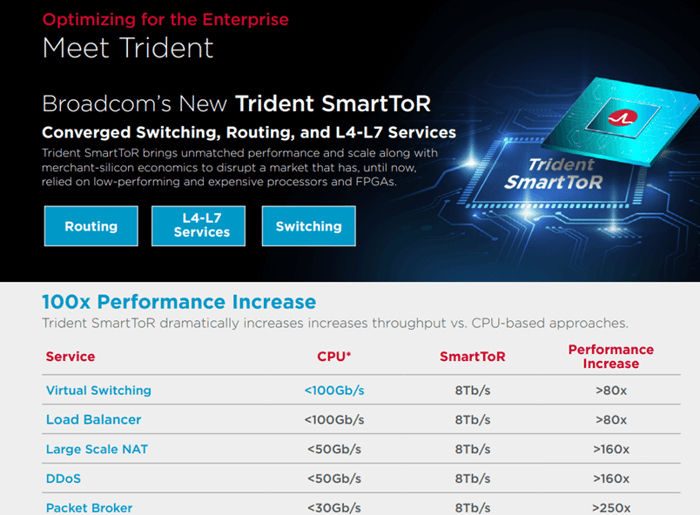
Cisco Silicon One has gotten much attention because of its all-in-one design and how well it works. However, Broadcom is still a formidable competitor in the network chip business, with plenty of good things going for it. Here's a rundown of what makes Broadcom's network chips stand out:
Benefits of Broadcom
- Proven Performance and Reliability:- Broadcom has become a top player in the semiconductor field and has a reputation for making networking chips that perform well and don't break down.
People know the company's products, like the Tomahawk and Trident lines, for their ability to handle challenging networking situations. This proven track record makes Broadcom a trusted choice for data centers, enterprises, and service providers.
- High Throughput and Low Latency: Broadcom's networking chips are built to provide high throughput and low latency, critical elements for today's networking. The Tomahawk 4, for example, can handle up to 25.6 Tbps of bandwidth, allowing quick and effective data movement.
The minimal delay in Broadcom's chips is helpful for tasks like AI/ML high-speed trading and live communications where every millisecond counts.
- Scalability and Flexibility:- Broadcom's modular chip design influences how networks grow and fit into different setups. This adaptability lets customers build their network structure as they must keep up with growth and changing needs. Being able to put Broadcom's chips into various networking tools also makes network planning simpler and cuts down on complications.
- Cost-Effective Solutions: - Broadcom's pricing strategy aims to provide high performance and reliability at a competitive price. The company's chips are cost-effective and perform well, making them an appealing choice for many customers.
Also, Broadcom's emphasis on power efficiency can result in long-term energy cost savings, further boosting their products' cost-effectiveness.
Get more information on Broadcom Products.
Competitive Landscape
- Head-to-Head Comparison:
Cisco Silicon One and Broadcom compete, each aiming to offer top-notch performance, productivity, and capabilities. Cisco highlights its unified design and energy efficiency, while Broadcom stresses its tested performance, wide range of products, and robust industry ties.
- Emerging Competitors:
Other firms, like Intel, NVIDIA (after buying Mellanox), and Marvell, also progress in the networking chip scene. These companies bring their strengths, such as cutting-edge AI abilities, fast connections, and fresh designs, which spice up the competition.
This article is purely based on Cisco Silicon and Broadcom. However, we have added the comparison table for Marvell and Intel Chips.
Comparison table for Marvell vs. Intel chips
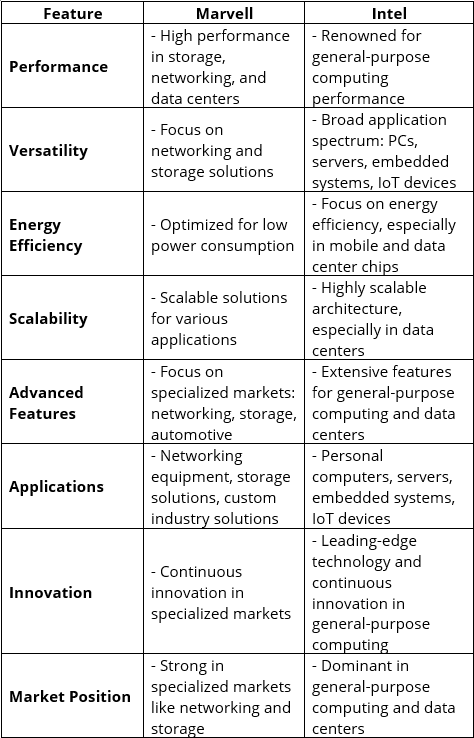 Conclusion
Conclusion
When we look at Cisco Silicon One and Broadcom, we see that both companies lead the way in creating new networking chips. Cisco Silicon One stands out because it has a unified design, works well, and doesn't use much power. This makes it great for many different networking jobs. On the other hand, Broadcom makes strong, expandable chips that focus on working well and being reliable.
As people want chips that work better and save more energy, Cisco and Broadcom are ready to meet the changing needs of data centers, AI/ML tasks, and high-performance computing. Their rivalry will push them to make even better networking technology, which will help customers and the whole industry.
Ultimately, the choice between Cisco Silicon One and Broadcom hinges on your requirements. Performance, speed, power consumption, and cost should be carefully considered. By understanding what each chip family excels at, buyers can confidently make an informed decision that best suits their needs.


